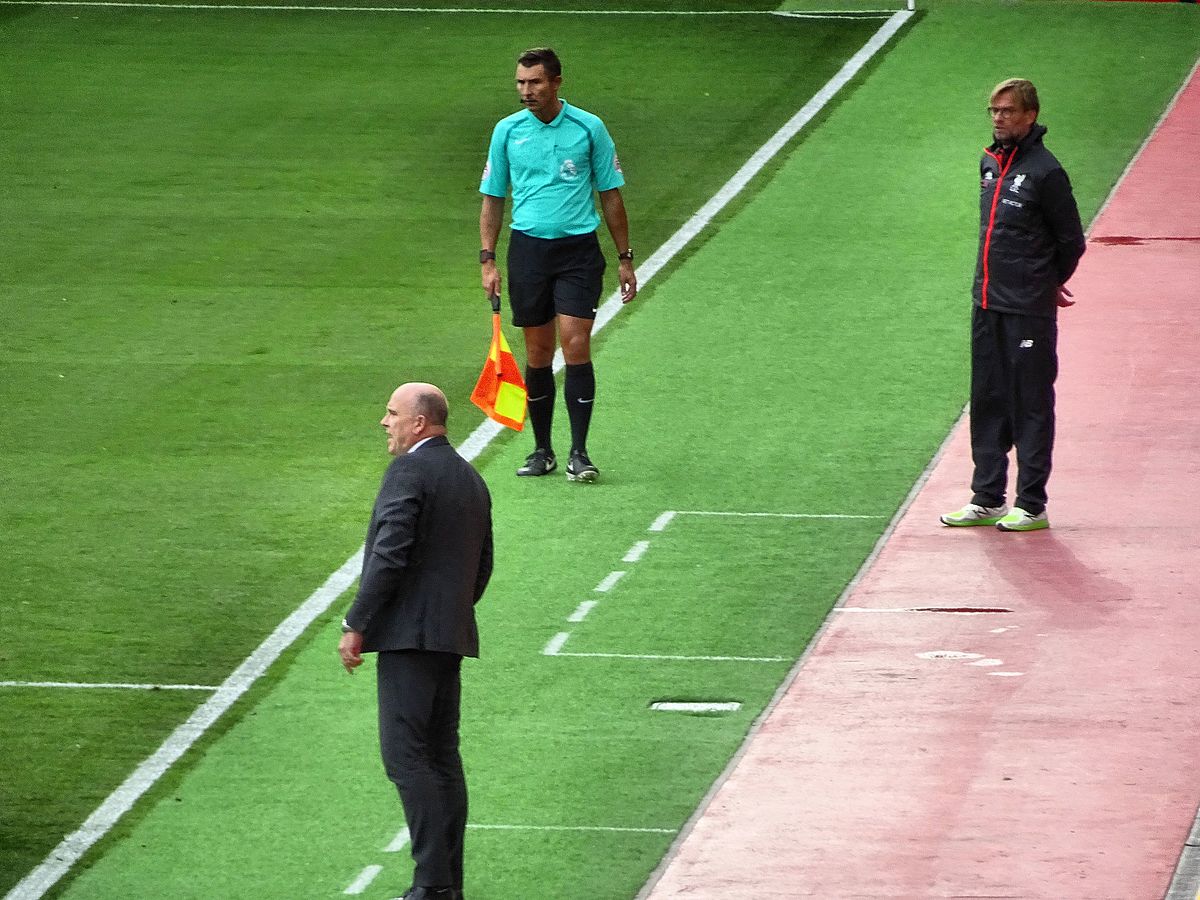Liverpool’s success is rooted in getting small details right
After Chelsea’s win over Manchester City, the inevitable was confirmed: Liverpool ended their 30-year drought to become champions once again. Much is made of Jurgen Klopp’s man-management, but that alone is not enough to win a title. Tactically, Klopp’s side have been impeccable this season.
Ostensibly Liverpool line-up in a 4-3-3 formation, however, when the team is in possession their shape more closely resembles a 3-4-3. The two centre backs are supported by their holding midfielder, often Fabinho, who regularly slots in between them.
Ahead of them is a pivotal bank of four: full backs Trent Alexander-Arnold and Andrew Robertson support their ‘box-to-box’ colleagues Jordan Henderson and Gini Wijnaldum.
This system was crafted in the wake of the sale of Coutinho to Barcelona
The famous front three features the inverted wingers of Mohamed Salah on the right and Sadio Mane on the left, with Roberto Firmino dropping deeper behind them as a ‘false nine.’
This system was crafted in the wake of the sale of Philippe Coutinho to Barcelona in January 2018, with Klopp opting to not directly replace the attacking midfielder. Instead, he chose a more dynamic set-up which focused on creating chances through overloads in wide-spaces and an increased attacking output from their full-backs.
When Klopp’s full backs join the attacks, their respective box-to-box midfielder will cover the space in behind them. Klopp’s desire to prevent counter-attacks is as strong as his desire to launch them.
Overloads are created by overlapping runs from either the full back or their respective winger, with a box-to-box player or Firmino also dropping wide in order to bolster their numbers. When teams focus their energy on one side of the pitch, one full-back can also play a famous cross-field ball to the other, who is thus in a much more space to shoot or create chances.
Klopp’s Liverpool press equally high up the pitch as his Dortmund
This is a reaction to a broader shift in football in recent years, from the dominance of the attacking midfielder in a 4-2-3-1 to a greater emphasis on width and the apparent ‘death of the number 10.’
January 2018 also saw this team’s most pivotal signing, the imperious centre-half Virgil Van Dijk. The significant improvement that the Dutchman brought to Liverpool’s defence led them to play an incredibly high defensive line, with their centre backs often standing on the halfway line. In the rare occasions that they are beaten, Alisson is on hand to sweep up.
A legacy of his time at Borussia Dortmund, a conversation about the tactics of Jurgen Klopp almost inevitably turns to ‘gegenpressing,’ (counter-pressing), a tactic which involves committing several men to press their opponents hard and rapidly win the ball back.
Whilst Klopp’s side do not press in the same style as Dortmund it would be a mistake to suggest that pressing is not at the heart of their strategy. Klopp’s Liverpool press equally high up the pitch as his Dortmund but commit less men doing so.
Mane operates from the opposite flank, Firmino presses through the centre
The main avenue for the champions’ pressing has come from their front-three. When opposition defences attempt to play out from the back, they are met with Salah pressing the half-space in between the left-centre back and left-back. Mane operates from the opposite flank, while Firmino presses through the centre.
In the unlikely case that opponents are able to pass through Liverpool’s front three, their midfield then faces the intense pressing of Henderson and Wijnaldum, before usually making an error. As the opponents are out of shape after losing the ball, Liverpool are ruthless in capitalising on these mistakes, with the pace and accuracy in fishing of their front three.
Therefore, rather than attempting to play out from the back, many teams instead seek to ‘go long.’ As a result, Klopp’s Liverpool have a great emphasis on winning aerial duels, with both centre-halves and Fabinho often dominant in these battles.
In contrast, Liverpool are able to execute multiple successful long balls in a game. The dominant sources of these long balls are Van Dijk and Henderson but both Alisson and the full-backs contribute too. It is not an unfamiliar sight to see a Liverpool attack prompted by a long ball from deep, finding one of their attackers in space out wide.
An emphasis on long balls and corners is the approach of promoted clubs
Set pieces are also a major contributor of goals to Klopp’s side. The free-kick taking ability of Alexander-Arnold has been a reliable source of goals, as has his corner-taking, with his corner kicks regularly meeting the heads of Liverpool’s lofty defenders.
An emphasis on long balls and corners is usually the approach of newly-promoted clubs and has led to labels of inelegance being attached to sides like Sam Allardyce’s Bolton and Tony Pulis’ Stoke. However, Liverpool are far from inelegant and have achieved their success by combining stylish football with getting the seemingly ‘small things’ right.
One such superficial ‘small thing’ is the team’s use of throw-ins. The club were derided in some parts of the media for hiring Thomas Gronnemark, a specialist throw-in coach in September. However, Liverpool had the last laugh, with the techniques employed by Gronnermark creating a number of changes that led to goals in the past two seasons.
The tactical lesson from Klopp’s Liverpool is that if you get the simple things right, the more difficult elements will look after themselves.

Comments